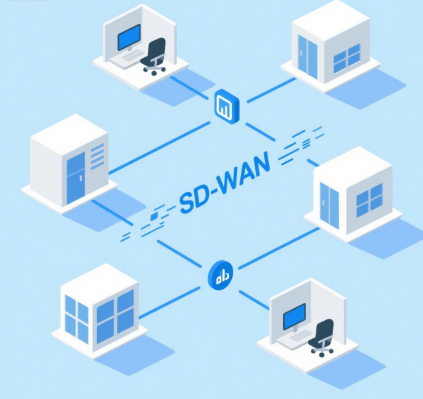The annual cost of dedicated line bandwidth for foreign trade enterprises is affected by multiple factors, and it is necessary to comprehensively evaluate from the dimensions of bandwidth scale, target area, service provider type, contract period and technical solution. The following related analysis is summarized based on common industry data and billing models!
1. Core composition of costs and price range
Bandwidth demand is the basis of pricing, and unit cost will decrease as the scale increases. The basic bandwidth is 1M to 10M, and the annual payment starts at about 5,000, which is suitable for low-traffic demand scenarios such as corporate user email and web browsing. The medium bandwidth is 10M to 50M, and this annual payment is generally 15,000 to 30,000 yuan, which can meet the daily network service needs of video conferencing and small and medium-sized cross-border e-commerce platforms.
High bandwidth can reach 50M to 100M+, such as live broadcast, large independent stations, etc., with dedicated lines above 5M, and annual payment exceeds 30,000 yuan; bandwidth of 1,000 megabits and above requires customized quotation, because the additional costs such as the number of IP addresses and redundant configuration are significant.
The prices of international dedicated lines for foreign trade will also vary depending on the region. The mature market costs in Europe and the United States will be lower, with annual costs per Mbps ranging from 600-1200 yuan. In the Middle East/Africa and other regions, the price is 40%-60% higher than that in Europe and the United States due to the scarcity of resources and the difficulty of deployment.
The prices vary depending on the type of service provider. Operators directly operate (such as China Unicom and China Telecom) to provide high SLA (service level agreement) guarantees, with a premium of 15%-25%. For example, the annual fee for China Unicom's 100M/10M uplink dedicated line is 18,000 yuan, while the same service of China Telecom is 30,000 yuan. Third-party agents reduce prices through resource integration, with the account version as low as 690 yuan/year, and the enterprise customized version still requires tens of thousands of yuan.
The length of the contract period also affects its price. Long-term contracts (≥2 years) can get discounts, and some service providers promise that the rates will remain unchanged, reducing the risk of corporate budget fluctuations.

II. Flexible billing models and emerging solutions
1. Pay-as-you-go billing: suitable for enterprises with large traffic fluctuations.
A service provider in Malaysia has launched a payment model based on GB, starting from 999 yuan per month, with free quota + overage billing, and the cost in the off-season can be reduced by 70%. There is also a monthly fixed IP plan, which is suitable for lightweight cross-border store management.
2. SDWAN technology alternative:
Optimize links through software-defined networks and dynamically allocate bandwidth. For example, the global networking solution saves 30%-50% of the cost compared to traditional dedicated lines, which is especially suitable for enterprises with multiple branches.
III. Hidden costs and optimization strategies
There are also some additional costs, such as public IP addresses. After exceeding the free quota, it is generally 15 and each IP has a monthly fee of 150 yuan. Equipment and access costs such as the initial installation of optical templates and router light hardware investment are about thousands of yuan.
The cost optimization path can use a hybrid deployment strategy, with dedicated lines for key businesses to ensure SLA, and non-core traffic diverted to low-cost SDWAN. Long-term contracts can strive for fee reductions. For example, Jtti physical servers can support annual payment and waive 2 months of fees to improve cost performance.
IV. Deployment process and decision-making recommendations
Requirement confirmation: Clear bandwidth peak, latency requirements (such as <100ms for video conferencing), and redundancy backup level.
Service provider screening: Test link quality and test actual packet loss rate with free trial. Check compliance and select service providers with cross-border qualifications (such as OSDWAN).
Contract signing: Clear SLA terms, such as 99.9% availability and fault compensation standards. Lock the rate cycle to avoid cost jumps during operation.
The annual fee for foreign trade dedicated lines ranges from thousands of yuan to hundreds of thousands of yuan. Enterprises need to balance the three variables of business scale, regional characteristics, and technical solutions. The current trend shows that elastic billing and SDWAN technology are gradually reducing the threshold for small and medium-sized enterprises to use the Internet. However, high-reliability scenarios still require traditional dedicated line support. It is recommended that enterprises test first before signing, and achieve the optimal solution of cost and performance through hybrid networking.

 EN
EN
 CN
CN









